Visitez Strasbourg en 2 jours
20 POIs incontournables, parcours optimisés et anecdotes.
Chargement de la carte...
Vous allez visiter les plus beaux points d'intérêt de Strasbourg
















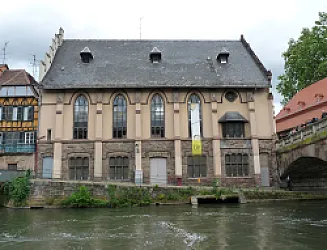
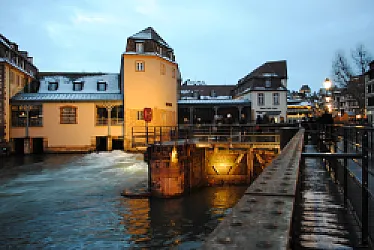
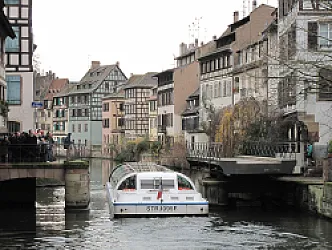

2 Days in Strasbourg — A Love Letter to the Island City
Strasbourg stole my heart the moment I stepped onto its cobbled streets. The city feels like a storybook and a living, breathing capital at once. Locals call it the "Capital of Europe" and the "Capital of Christmas," and yes, the charm is real. Some say it's overrated, but I disagree — its light, history, and warmth are unmistakable. I visited in spring and still dream about the bell chimes and river reflections.
Why visit Strasbourg beyond the famous sights? The city combines grand Gothic spires with cozy timbered alleys. You smell fresh pastries, hear church bells and chatter, and taste tarte flambée in tiny bistros. Iconic places like the Cathedral of Our Lady, the Statue of Gutenberg and Place Saint-Étienne are only the beginning. Walking here feels cinematic: sunlight on canals, ornate facades, and unexpected courtyards. You leave feeling both wonder and a soft, domestic comfort that makes you want to linger.
Planning a trip can feel overwhelming. There is so much to see in Strasbourg that you could stay for weeks. If this is your first visit, you might worry about fitting everything in. That’s exactly why I created this compact and joyful Strasbourg itinerary. Below, I’ll show you how to spend two full days and still breathe. Expect 16 highlights across religion, historic architecture, sculptures, manor houses, and urban charm — including the Seminary of St. Mary Major and Rue de la Division Leclerc.
Key tip: Go early and walk slowly. The Cathedral of Our Lady is best at dawn for light and quiet. Early starts mean fewer crowds and better photos. Walking unlocks hidden alleys and cozy cafés you’ll miss from buses. Wear comfortable shoes and pause for a pastry or coffee in Place Saint-Étienne. This makes your two days feel unhurried and full.
Now let’s dive into the itinerary and discover exactly what to see in Strasbourg, how to savor it, and how to fall in love with the city on your first time in Strasbourg.

Quick Mini Guide to Strasbourg
Where to stay:
- Centre-ville / Grande Île — walkable to Cathedral, Gutenberg statue and Rue de la Division Leclerc; ideal for evening photos of the illuminated façade.
- La Petite France — picturesque timbered houses and canals; quieter for early morning walks.
- Near Place Saint-Étienne — good for cafés, student vibe and quick access to the Seminary of St. Mary Major.
When to visit:
- Spring and early autumn — mild weather, fewer coach-tour crowds at the Cathedral of Our Lady.
- Weekdays morning — climb the cathedral platform before guided tours fill the site.
Things to do:
- Cathedral of Our Lady — buy a slot to climb the tower for panoramic views; don’t miss the Astronomical Clock inside.
- Statue of Gutenberg — quick photo stop and short walk to Rue de la Division Leclerc for local shopping and views toward the cathedral.
- Seminary of St. Mary Major & Place Saint-Étienne — enjoy café culture and occasional concerts; use this area as a slower cultural detour.
- Book an interactive tour: "Secrets of Strasbourg" for hidden history or "The Alchemist STRASBOURG" for an immersive puzzle walk.
Don't forget:
- Validate tram tickets (or use contactless) — trams are fastest between sites.
- Try tarte flambée and local Riesling; small winstubs fill up, reserve for dinner.
- Wear comfortable shoes — cobbles and canal paths reward walking between landmarks.
Jour 1 - Strasbourg
10 POIs à découvrirJour 1 - Matin à Strasbourg
5 Points d'intérêt - Durée : 3h15 - Distance : 1.2 km - Marche : 0h16
Place de l'Homme de Fer
- La place de l’Homme-de-Fer tire son nom d'une statue d'un soldat en armure fixée au 18e siècle sur une demeure, devenue le no 2 de la place.
- Pendant la Seconde Guerre mondiale, un îlot d'immeubles a été détruit pour créer la place actuelle.

Monument du général Kléber
- Le monument du général Kléber est dédié au héros des guerres révolutionnaires, assassiné au Caire en 1800.
- Ses restes ont été embaumés et transportés à divers endroits, y compris Marseille et Strasbourg.
- En 1838, ses cendres ont été transférées dans un caveau sur la place Kléber à Strasbourg, avec une statue en bronze le représentant.
- La statue en bronze du général Kléber surmonte son caveau, tenant la lettre de l'amiral britannique demandant son départ d'Égypte, avec un sphinx représentant l'Égypte à ses pieds.

Aubette
- Construit entre 1765 et 1778, à l'origine destiné à des fins militaires, le bâtiment a été utilisé pour des logements et un corps de garde.
- En 1928, le bâtiment a été transformé en complexe de loisirs avec des salles telles qu'un ciné-dancing et un foyer-bar.
- Le complexe de loisirs proposait différentes salles avec des décors géométriques et des formes biomorphiques, reflétant l'avant-garde artistique de l'époque.

Palais Rohan
- Le palais a été construit en 1732-1742 pour le prince-évêque Armand-Gaston-Maximilien de Rohan, en remplacement du précédent palais épiscopal.
- Le palais tire donc son nom de la famille de Rohan, avec quatre prince-évêques portant ce nom ayant occupé le diocèse de Strasbourg au 18e siècle.
- Pendant la Révolution française, le bâtiment a servi de lieu de détention, et après l'annexion allemande de Strasbourg, il a abrité les cours de l'université Kaiser-Wilhelms-Universität.
- Aujourd'hui, le palais abrite trois musées : le musée des Arts décoratifs, le musée des Beaux-Arts et le Musée archéologique.
- Les intérieurs du palais comprennent des grands appartements, tels que la salle du synode, le salon des évêques, la chambre du roi, et le salon d'assemblée, ainsi que des petits appartements du prince-évêque, comme l'antichambre et la chambre à coucher de Napoléon Ier.

Place Kléber
- La place honore Jean-Baptiste Kléber, général français célèbre pour sa participation aux guerres de la Révolution et à la campagne d'Égypte.
- La place est bordée par l'Aubette, un bâtiment néo-classique construit au 18e siècle.
- Une statue de Kléber se trouve au centre de la place, représentant le général en pieds tenant la lettre de l'amiral Keith.
Jour 1 - Après-midi à Strasbourg
5 Points d'intérêt - Durée : 3h45 - Distance : 1 km - Marche : 0h13
Hôtel Cour du Corbeau
- Construit au XVe siècle, il a abrité une hostellerie, fréquentée par des personnalités telles que le duc de Bavière et l'empereur d'Autriche.
- En 1668, un incendie a touché l'hôtel, mais il a survécu et a fonctionné comme une auberge jusqu'en 1854.
- La Cour du Corbeau, composée de bâtiments hétérogènes, a été restaurée au XXe siècle tout en préservant son caractère historique.
- En 1999, des sondages archéologiques ont révélé des vestiges des XVe et XVIe siècles.
- La Cour du Corbeau, avec ses façades et toitures, est classée monument historique depuis 1930.
- Le puits situé dans la cour est également classé monument historique depuis 1933.

Place du Château
- Cette place a porté plusieurs noms au fil du temps : Cour de l'évêque, place de l'Evêché, place de la Responsabilité, place du Château du Palais, place du Château Royal, place du Château, Schlossplatz, et à nouveau place du Château.
- Elle a aussi subi des changements de nom liés à l'histoire de la région : des noms en français puis en allemand pendant certaines périodes.
- Construite en 1215, elle a conservé son nom actuel depuis la fin de la Seconde Guerre mondiale.

Place du Marché Gayot
- Établie en 1769 à l'emplacement de l'hôtel canonial de Brunswick, la Place du Marché Gayot était initialement prévue pour être un marché aux herbes et à la volaille.
- Des maisons ont rapidement été construites autour de la place, dont un grenier à sel et une auberge, ainsi que des maisons à colombages, dont certaines avaient des portes basses pour loger les employés de la cour épiscopale.
- La place a servi de marché de viande de boucherie et abrité une halle avant de devenir un parking, puis a été restaurée pour accueillir des terrasses de cafés, de restaurants et des piétons.
- Depuis 2003, la place est ornée de la sculpture en fonte "Pierre trouée" de Daniel Pontoreau, ressemblant à une météorite énigmatique tombée du ciel.

Neue Bau
- Le Neue Bau est un monument historique du 16e siècle, à l'origine une extension de l'Hôtel de Ville de Strasbourg.
- Il est maintenant le siège de la Chambre de commerce et d'industrie de Strasbourg et d'Alsace.
- Après la destruction de la Pfalz en 1781, le Neue Bau est devenu le nouvel hôtel de ville.

Maison Kammerzell
- Construite en 1427, la Maison Kammerzell possède des colombages richement décorés et se trouve en face de la cathédrale Notre-Dame.
- Achetée en 1571 par le négociant Martin Braun, des étages en bois sculpté ont été ajoutés en 1589 dans un style Renaissance unique.
- Les décorations en bois sculpté sur la façade représentent des scènes sacrées, des légendes médiévales, les cinq sens, les quatre âges de la vie, et d'autres symboles.
- L'intérieur abrite un restaurant et une peinture de 1910 par Léo Schnugg illustrant une anecdote culinaire strasbourgeoise.
Jour 2 - Strasbourg
10 POIs à découvrirJour 2 - Matin à Strasbourg
5 Points d'intérêt - Durée : 3h45 - Distance : 1.2 km - Marche : 0h15
Pont de la Poste
- Pont de La Poste est un pont en arc surbaissé (segmentaire) et pont routier (pont-route) dont la construction a commencé en 1904.

Passerelle des Juifs
- La passerelle juive de Strasbourg enjambe l'Ill depuis le quai Lezay-Marnésia jusqu'à la place de la République.
- À l'époque médiévale, c'était l'emplacement de la porte juive dans les anciennes fortifications de la ville, menant au cimetière juif.
- Tragiquement, lors de l'épidémie de peste noire le jour de la Saint-Valentin en 1349, des juifs ont été brûlés à cet endroit.

Palais de justice
- Le palais de justice, construit dans les années 1890, arbore une façade néo-grecque ornée de colonnes ioniques, de sculptures allégoriques et de sphinx.
- Les éléments décoratifs allégoriques et les sphinx se retrouvent également à l'intérieur du bâtiment, en particulier près des escaliers menant aux salles d'audience.

Palais du Rhin
- Aussi connu sous le nom de Kaiserpalast, le Palais du Rhina été construit en 1883-1888 dans un style néo-renaissance germanique.
- À l'origine un palais impérial, le bâtiment est désormais utilisé comme bâtiment officiel.
- Le jardin du palais abrite une collection archéologique et des sculptures.
- Le bâtiment lui-même a subi des transformations au cours des années, y compris une utilisation en tant qu'hôpital militaire pendant la Première Guerre mondiale.

Opéra national du Rhin
- L'Opéra national du Rhin est géré par les villes de Strasbourg, Mulhouse et Colmar, chacune ayant sa propre activité créatrice : opéra à Strasbourg, Ballet de l'Opéra national du Rhin à Mulhouse et Opéra Studio à Colmar.
- L'institution a plus de 50 ans d'existence et collabore avec l'Orchestre philharmonique de Strasbourg et l'Orchestre symphonique de Mulhouse pour les productions musicales et chorégraphiques.
Jour 2 - Après-midi à Strasbourg
5 Points d'intérêt - Durée : 3h30 - Distance : 0.6 km - Marche : 0h07
Petite France
- La Petite France, un quartier pittoresque classée au patrimoine mondial de l'UNESCO depuis 1988. Le quartier est bordé par différents cours d'eau : Ill, canal de navigation, canaux du moulin Spitz, Düntz et Zorn.
- Le quartier est délimité par des quais et des rues, tels que le quai de la Bruche, la rue du Bain-aux-Plantes, la place Benjamin-Zix, etc.
- La Petite France était historiquement constituée de plusieurs entités distinctes : les Ponts couverts, le quartier des Moulins, environs de la rue du Bain-aux-Plantes.
- Un établissement pour les malades de la syphilis a été transféré à la Petite France en 1687, donnant son nom au quartier.
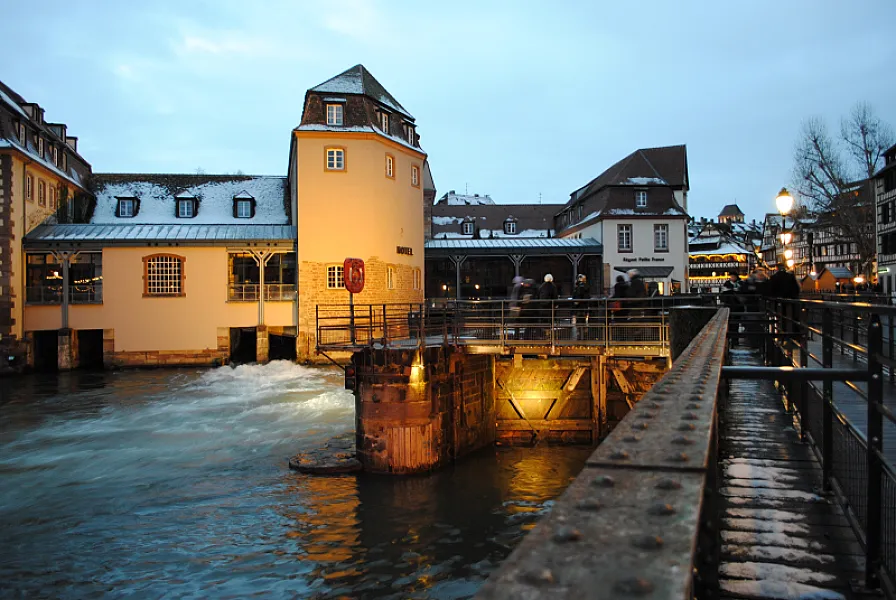
Anciennes Glacières
- Les anciennes glacières de Strasbourg étaient autrefois une usine de froid artificiel avec des machines de la société Quiri, de 1897 à 1990.
- Les bâtiments ont été transformés en un hôtel cinq étoiles appelé Le Régent Petite France.
- L'usine utilisait la vaporisation de gaz liquide pour produire du froid, similaire au fonctionnement des réfrigérateurs domestiques.
- L'usine a cessé sa production le 31 mai 1990.
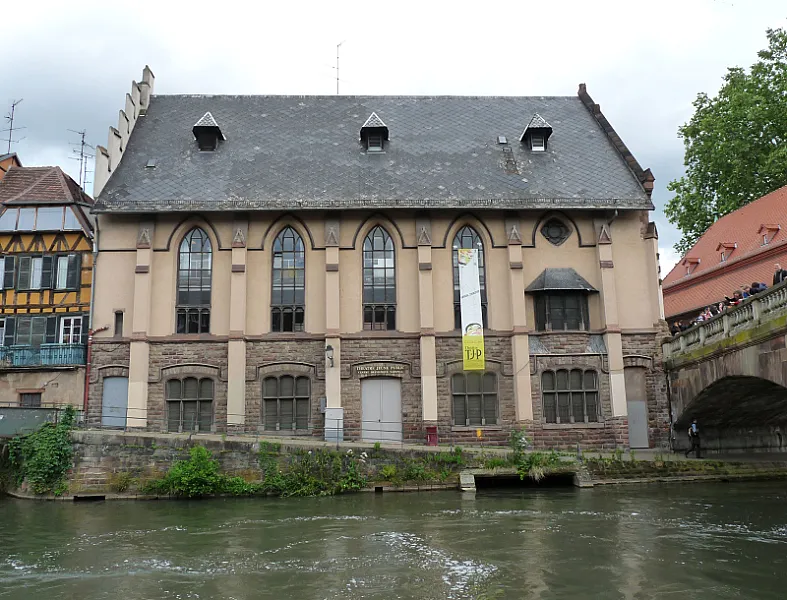
Église Saint-Martin
- L'église Saint-Martin de Strasbourg a été construite en 1905 dans un style néogothique.
- L'église ne doit pas être confondue avec l'Église Saint-Martin de Strasbourg du 12e siècle.
- La communauté qui se réunissait dans cette église a déménagé dans le quartier de la Meinau en 1969 suite à la construction d'une nouvelle église baptiste.
- L'église n'est plus utilisée pour le culte.
- Depuis 1974, le bâtiment abrite le Théâtre Jeune Public.
- Ces informations font partie d'un projet d'article sur une église ou une cathédrale.
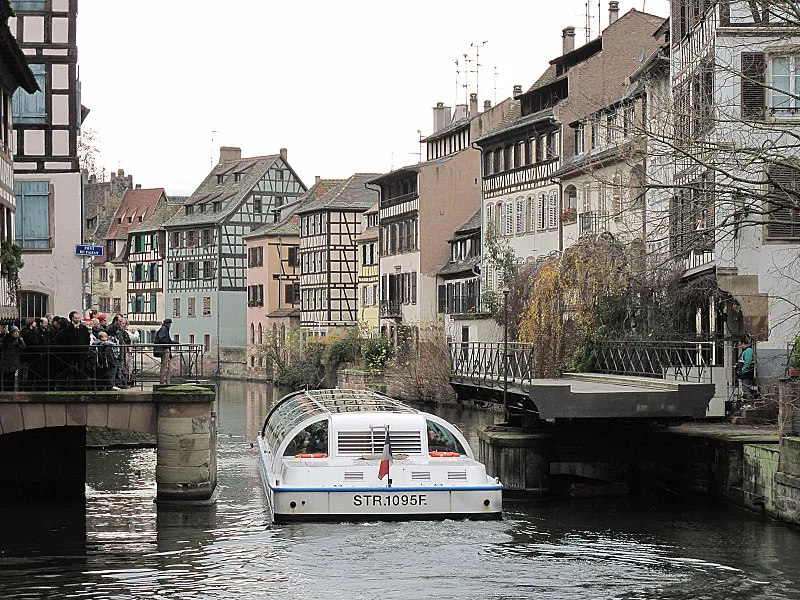
Pont du Faisan
- Le pont Faisan, également connu sous le nom de pont tournant, est un pont hydraulique rotatif du XIXe siècle.⌛ Un pont original en bois datant du XIVe siècle a été remplacé en 1854 par ce pont mobile pour permettre le passage des piétons et des cargos.
- Le pont a été transformé en pont-levis en 1869, puis remplacé en 1888 par le modèle actuel en acier et en bois.
- En 1999, le pont a été rénové et amélioré avec un système de fonctionnement hydraulique.
- Aujourd'hui, ce pont pittoresque est l'une des attractions touristiques du quartier historique alsacien préservé datant du XVIe siècle.
- Construit à côté de la maison du 40 rue du Bain-aux-Plantes, le pont se trouve à proximité de nombreux points d'intérêt dont la célèbre Maison des Tanneurs de Strasbourg.

Église Saint-Pierre-le-Vieux
- L'église du Vieux-Saint-Pierre est mentionnée pour la première fois en 1130.
- C'était une église simultaneum catholique et luthérienne.
- Au Moyen Âge, elle était l'une des neuf églises paroissiales du diocèse de Strasbourg.
- L'église est devenue le nouveau siège du chapitre de l'abbaye de Honau en 1398, en raison des inondations survenues dans leur emplacement d'origine à Rhinau.
- Une " école moyenne " de latin a été ouverte dans l'église en 1535.
- En 1683, Louis XIV a ordonné qu'une partie de l'église soit rendue aux catholiques et qu'un mur de séparation soit installé.
- L'église abrite diverses œuvres d'art notables, notamment des peintures gothiques et des reliefs en bois de la Renaissance, dont certains ont été classés au titre des Monuments historiques.
Where to Stay in Strasbourg
Choosing the right base in Strasbourg matters because the city rewards walking and short tram hops: your neighbourhood will shape how much of the city you can soak in without wasting time. If you want to wake up and be moments from the Cathedral of Our Lady and the Statue of Gutenberg, staying on the island heart of the city makes it easy to slide into the UNESCO-listed atmosphere and to make the most of a two-day stay.
Strasbourg is compact and layered, with the medieval Grande Île at its core, lively student quarters to the north and east, and the gridded Neustadt and quieter residential streets beyond. The Seminary of St. Mary Major and Place Saint-Étienne sit close enough to each other and to the cathedral that a central location keeps your walking straightforward: mornings in the cathedral precinct, afternoons exploring nearby lanes and the riverside, evenings at a café without a long commute back to your room.
For practical neighbourhood choices, consider staying on the Grande Île if you want to be in the thick of things — the Cathedral and the Statue of Gutenberg will be part of your daily stroll. If you prefer a slightly calmer, local feel but still within easy reach of the Seminary of St. Mary Major and Place Saint-Étienne, the Krutenau area offers narrow streets, student energy and good dining options. Those who value tidy boulevards and a sense of 19th‑century architecture will find the Neustadt direction useful, especially if you want straightforward access to Rue de la Division Leclerc and tram links.
Getting around is simple: Strasbourg’s efficient tram network and compact centre mean most sights are 10–20 minutes apart. Pick accommodation with a nearby tram stop or within easy walking distance of the cathedral; arriving at Gare Centrale usually puts you a short tram ride from the heart. For an efficient two-day itinerary, base yourself where mornings can be spent at the cathedral and Seminary, afternoons around Place Saint-Étienne, and pockets of time left to wander by the Gutenberg statue and along the river.
Finally, don’t overthink it: whether you choose a central room on the Grande Île, a cosy flat in Krutenau, or a quiet street in Neustadt, prioritise proximity to transit and the cathedral area for peace of mind. With a good location you’ll waste less time in transit and more time enjoying Strasbourg’s layered streets, architecture and riverside charm. Safe travels — your short stay will feel perfectly manageable from the right base.
Getting Around Strasbourg
Strasbourg is delightfully easy to explore by public transport, and once you get comfortable with the rhythm of the city you’ll feel like a local in no time. The network run by CTS is centered on frequent tram lines (A–E) and a complementary bus system, so most sights are never far from a stop. Trams are punctual and the stops are well signed in both French and English, which makes hopping from the riverside to the Grande Île feel effortless 🚇. The city’s compact center also means many attractions are within a pleasant walk if you prefer to soak up the streetscape.
A practical tip about tickets: you can buy single tickets, multi-ride carnets, or a day pass depending on how much you plan to move around. Single fares are inexpensive (usually under a few euros) and a 24‑hour option often becomes the best value for a full day of sightseeing. Purchase at station machines, from kiosks, or via the official CTS app, and remember to validate your ticket on the validators when you board; inspectors do check. Most ticket machines accept cards and contactless payment, so you don’t need to carry lots of change 🎫.
Use Google Maps to plan routes in real time: it shows tram numbers, departure times, and walking segments clearly. Set your destination to the exact name (for example Cathedral of Our Lady or Place Saint-Étienne) and Google will give you door‑to‑door directions with platform info and estimated travel times. I rely on it constantly in Strasbourg because the app’s tram departure times are usually spot on, and it helps you decide whether to walk a scenic five minutes instead of waiting for the next tram.
Money-saving hints: if you love wandering, combine walking with trams—many central POIs are clustered so a mix of both saves fares. If you’re in town for a couple of days, a day pass or a small carnet of tickets often costs less per ride. Also look for reduced fares for youth and seniors on the CTS website before you travel.
From personal experience, when we wanted to go from the Seminary of St. Mary Major to the Cathedral of Our Lady we didn’t overthink it. We hopped on a tram toward the city center, got off at Homme de Fer, and walked along the lively streets to the Cathedral in under ten minutes. The tram dropped us close, we validated our tickets, and then enjoyed the short walk through historic lanes—simple, efficient, and joyful 🗺️. You’ll find Strasbourg’s transport welcoming and straightforward, perfect for first-time visitors.
What to Pack for Strasbourg
Two days in Strasbourg is mostly church spires, canals of La Petite France, and strolling between monuments — I learned that on my first trip when I ambitiously walked 15 miles over two days and still felt like I missed corners. Below are the essentials I pack every time, with short stories about why each item saved the day (or my feet).
1. Comfortable walking shoes (REQUIRED — e.g., Ecco Soft 7 or Merrell Moab): Strasbourg’s historic center is full of cobblestones and uneven pavements. The first time I wore flats I was miserable by hour three; with supportive shoes I easily did 10+ hours of wandering without foot pain. Choose shoes with good soles and ankle support so your knees don’t pay the price after climbing cathedral steps.
2. Cross-body bag with zippered compartments: Popular viewpoints and trams get crowded around cathedral hours. I had my phone jostled once on a packed bridge — a small, zippered cross-body stopped it sliding out. It keeps essentials handy (wallet, transit ticket, tiny guide) and deters opportunistic hands, especially in touristy areas like Place Gutenberg.
3. Weather-appropriate clothing (layered jacket, breathable layers): Strasbourg weather flips quickly — I’ve been out for 10+ hours where morning fog turned into a sunny afternoon. Layers let you visit riverside monuments comfortably and still look tidy for a cathedral interior or a café. In cooler months bring a warm mid-layer; in summer, a light sun/shower jacket is a lifesaver.
4. Power adapter (Type C/E for France, 230V): You’ll be taking lots of photos of sculptures, façades, and memorials. My camera and phone both ran low by late afternoon the last trip; having the proper European adapter meant I could charge at my hotel and not miss evening shots. Don’t assume your charger will fit French sockets.
5. Power bank (10,000–20,000 mAh): Between map navigation, photography, and checking opening times, your phone battery will drain fast. I relied on a 10,000 mAh power bank to push my phone back to 70% during a long day of exploring and festival lights — it kept me connected without hunting for cafés to plug in.
6. Optional — compact umbrella & lightweight scarf: Short showers are common; once I ducked under a café awning for 20 minutes during a sudden downpour. A small umbrella packs tiny but keeps you sightseeing without getting soaked. A scarf doubles as a layer for cool evenings and a respectful cover when visiting religious sites.
Enjoy Your Trip to Strasbourg!
In just two days you'll explore 16 carefully chosen spots across Strasbourg, packed with cathedral spires, quiet courtyards and lively squares. From the Seminary of St. Mary Major to Place Saint-Étienne and the Cathedral of Our Lady, this itinerary gives you everything you need to taste the history, architecture and charm of the city.
Remember, this is a guide, not a strict schedule — the best moments are flexible. Let your pace lead the way and leave room for the unexpected: wandering down a hidden lane, stumbling on a sculpture, or pausing for a spontaneous café stop by the Ill. The magic often happens in unplanned moments, so don't pressure yourself to see EVERYTHING; savor a few places deeply.
I hope you arrive curious and leave inspired — I'm excited for you! Embrace Strasbourg's light on the canals, the hum of markets, and the hush inside its churches. You're going to love every winding street and create unforgettable memories that will stay with you long after you return.
Want to explore in a playful way? Check out our Coddy tours: Secrets of Strasbourg and The Alchemist STRASBOURG — gamified city adventures that turn discovery into a game. They're perfect for families, friends, or anyone looking for a lively, interactive way to see the city.
Safe travels! Have fun exploring Strasbourg — enjoy every moment, and please share your stories or ask me any questions when you return. Enjoy!
Envie de plus d'aventure ?
Découvrez nos jeux d'évasion urbains pour transformer votre visite en aventure interactive !





















